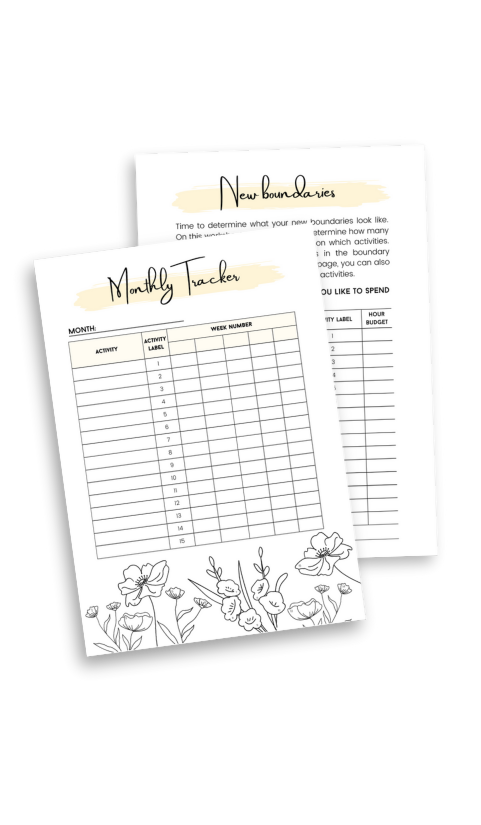Estimated reading time: 6 minutes
One of the loudest lessons life has handed me lately is very simple to say and painfully awkward to live: let go of control. I’ve always treated “being in charge” as a safety net. Whether it was running two freelance businesses, steering our home renovation, or micromanaging the daily details that keep a household (and a hyper‑active dog) humming. Recently, though, that net turned into a brick wall. I hit it face‑first while juggling work deadlines, renovation timelines, and the unspoken belief that if I didn’t hold every plate, the whole circus would collapse. My coach called it out, my husband felt the fallout, and I finally had to admit my inner control‑freak was running the show. What follows isn’t a neat five‑step program; it’s the raw, in‑progress truth of how I’m loosening that white‑knuckle grip and learning to trust: my partner, the process, and life itself.
Here’s what you’ll discover on how to let go of control:
- A little background before we get practical on how to let go of control
- 1. Noticing the ego behind the steering wheel
- 2. Practising micro‑letting‑go in real‑time
- 3. Journaling the “what if” catastrophes into perspective
- 4. Sharing the load… out loud
- 5. Re‑framing control as a comfort strategy: not a character flaw
- Do you also struggle to let go of control?
A little background before we get practical on how to let go of control
Two summers ago our house looked like a DIY reality show: trenches in the backyard, plaster dust drifting through the hallways, invoices piling up like Jenga blocks. I was running two freelance businesses from our living room table that kept migrating to whichever room wasn’t being demolished that week. Add a high‑energy dog tap‑dancing across extension cords and you’ve got the soundtrack of my daily life.
On paper I had everything “handled.” Spreadsheets tracked every bolt and board; calendar alerts told the plumbers when to sneeze. Friends and family joked I could project‑manage a moon landing. But inside I was brittle. Any deviation, a late delivery, a wobbly fence post, sent adrenaline roaring through my highly sensitive system. My husband would offer to take on a task and I’d instinctively say, “I’ll just do it, it’s faster.” Cue the resentment carousel: he felt sidelined, I felt unsupported, and the renovation started resembling my inner landscape. Cracks hidden under fresh paint.
The breaking point was a Saturday morning digging session in the garden. He had a plan and I… I had opinions. That afternoon I heard myself snap over something trivial and thought about myself, Who is this person? The gap between the competent project manager and the anxious micromanager had become a canyon. After some good conversation with my husband, I heard myself admitting the sentence I’d avoided for years: “I’m terrified to let go of control.”
Talking about this still feels exposing, like spotlighting the least flattering side of my personality. However, naming it is the only way it loosens its grip. What follows are the five practices that have been helping me step back from that ledge, still a work‑in‑progress, but already changing how I relate to my partner, my projects, and myself.

1. Noticing the ego behind the steering wheel
My first wake‑up call came in the garden: my husband’s project, not mine. I’d already claimed the indoor reno, but whenever my husband picked up a shovel I felt an almost physical pull to “help”…which really meant commandeer. Watching myself hover, correct, and second‑guess him was embarrassing. It wasn’t about the digging; it was my ego whispering, If you’re not in control, something terrible will happen and everyone will blame you. Seeing that loop in real time let me name what was actually operating: an anxious inner child that equates control with safety. Simply acknowledging “oh, this is my fear voice, not objective reality” loosened its grip a millimetre. That millimetre matters; you can’t loosen a knot you pretend isn’t there.
2. Practising micro‑letting‑go in real‑time
Cold‑turkey surrender triggers panic, so I started with bite‑size experiments. On heavy garden‑work days I’d ask my husband for a quick rundown of his plan, nothing more. Then I’d physically walk away to my own project and refuse to peek. Every time I survived an afternoon without peeking, my nervous system collected fresh data: Look, the world didn’t burn. Later, when we chatted about our projects and he updated me on his progress I’d practise saying, “That’s great, thank you,” instead of “Here’s how I would’ve done it.” Each micro‑release was a rep at the trust gym, proving my partner is competent, proving collaboration doesn’t equal chaos, and most importantly proving I am still safe when I’m not calling every shot.
3. Journaling the “what if” catastrophes into perspective
Because control is a mind‑made cage, self-reflection (either by thinking or writing) helps me saw through the bars. I use three ruthless questions:
- “Why am I afraid to let go of control here?” (e.g., I fear delays, judgment, wasted money.)
- “What’s the worst realistic outcome if I step back?” (Maybe the garden finishes a week late, so what?)
- “What am I unconsciously saying about my partner when I refuse to trust him?” (Ouch, that he’s incapable.)
Seeing those thoughts on paper drags them out of the shadows. Nine times out of ten the “disaster” is a timeline slip or a mildly crooked paving stone, hardly worth the cortisol spike. Journaling turns vague dread into concrete sentences, and concrete sentences lose power fast.
4. Sharing the load… out loud
Talking openly to my husband was the scariest and most relieving step. I confessed the tug‑of‑war inside me and asked for practical support:
For now, please keep me loosely in the loop so my brain doesn’t invent horror stories, but don’t hand the reins back the second I look anxious.
Giving him that context turned potential arguments into teamwork. Instead of guessing why I was tense, he knew: Ah, she’s practising letting go right now. And when he told me, “I’ve got this, go do your thing,” I practised believing him. Control loves secrecy; dialogue starves it.
5. Re‑framing control as a comfort strategy: not a character flaw
I used to label my behaviour “toxic.” My coach offered a gentler lens: controlling is a comfort strategy I built when life felt unsafe, it’s stubborn, not evil. Treating it as an over‑eager bodyguard helps me respond with curiosity instead of shame. Now, when the urge spikes I pause, breathe, and think, “Thanks for trying to protect me, but we’re safe. He’s capable. Stand down.” Some days the bodyguard listens, some days it doesn’t, but every compassionate reroute rewires a bit of my inner circuitry toward trust.
Do you also struggle to let go of control?
I’m still the woman who colour‑codes renovation spreadsheets, but I’m also the woman who can watch her partner finish projects without snatching back control. That progress feels enormous and it began with tiny acts of letting go, honest conversations, and a journal full of messy fears. If you’re wrestling with the same need to control, start small, stay kind, and remember control is a habit, not your identity.
While you’re here, please make sure to check out our HiSensitives Membership. Inside we explore gentle, real‑life tools for sensitive souls: community chats, weekly meditations, and deep‑dive meditation classes to help you trade perfectionism for presence. You don’t have to untangle these knots alone, come practise with us!
In this article, we collaborated with AI, meaning that the input and stories are original human ideas, but the text itself has been created with support from AI. All AI content is being edited and factchecked by our editor.








Beautifully written and deeply relatable. Thank you for sharing your journey with such honesty, your words feel like a warm permission slip to breathe, release, and trust a little more each day. 💛
Thank you for your warm compliment! It was hard to be that honest, but also freeing! I am happy that you could relate!